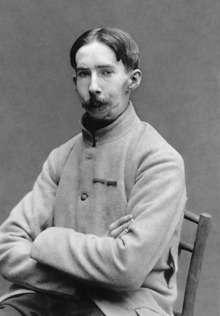Gueules cassées

Gueules cassées (broken faces)[1] is a French expression for facially disfigured servicemen which originated in World War I. Colonel Yves Picot is said to have coined the term when he was refused passing a checkpoint to a party.[1][2]
Background
Trench warfare protected the bodies but left the heads exposed.[3] Ironically, the introduction of the steel helmet in 1915 made head shots more 'survivable', but this reduction of mortality meant a mutilated life for thousands.[1]
At the start of the war those wounded to the head were generally not considered able to survive and they would not usually be 'helped first'.[4] This changed in the course of the war, as progress was made in medical practices like oral and maxillofacial surgery and most notably in the new field of plastic surgery.[5] Surgeons conducted experiments with bone, cartilage and tissue transplants and the likes of Hippolyte Morestin, Harold Gillies and Léon Dufourmentel made enormous advances.[3] Because of the experimental character of this surgery some chose to remain as they were and others could just not be helped yet.[4] Some of the latter were helped by all kinds of new prosthetics to make them look more or less 'normal'.[6]
Gueules cassées
An estimated 4.2 million French were wounded, 300,000 of which were classified as 'mutilated'. Of those some 15,000 can be called gueules cassées.[7] Right after the war those facially disfigured were not considered war veterans and exempt from support and veteran's benefits, but that changed later. In 1921 the Union des Blessés de la Face et de la tête (association of the wounded to the face and the head) was formed. The Colonel Picot mentioned above was one of its founders and a later president of the association.[1] It still exists, currently under the name Gueules Cassées with, considering the mutilations, the somewhat sour slogan sourire quand même (smiling nonetheless).
External links
- (French) Website of the association
- Broken gargoyles, article in The Guardian about much the same thing among Australian veterans
References
- 1 2 3 4 Biernoff, S. and Stein, C. (2008); "Les Gueules cassées (review)", in: Bulletin of the History of Medicine, Volume 82, Number 2, Summer 2008. Retrieved on-line through Project MUSE, 9 December 2015.
- ↑ (French) Les pères fondateurs, website of the "Gueules Cassées"-association, retrieved 8 December 2015.
- 1 2 How do you fix a face that’s been blown off by shrapnel?, bbc.co.uk. Retrieved 9 December 2015.
- 1 2 Smith, L. V., Stephane, A-R. and Becker, A. (2003); France and the Great War, Cambridge University Press, p. 94. Retrieved on-line through Google Books, 9 December 2015.
- ↑ The work done on this group of war wounded would now be classed as reconstructive surgery, rather than plastic surgery.
- ↑ World War One: Soldiers helped at Wandsworth 'Tin Noses Shop', bbc.com, 4 July 2014.
- ↑ (French) Bourdon, M. (2011); Bilan des pertes humaines de la Première Guerre mondiale, published on-line through scribium.com. Retrieved 9 December 2015.